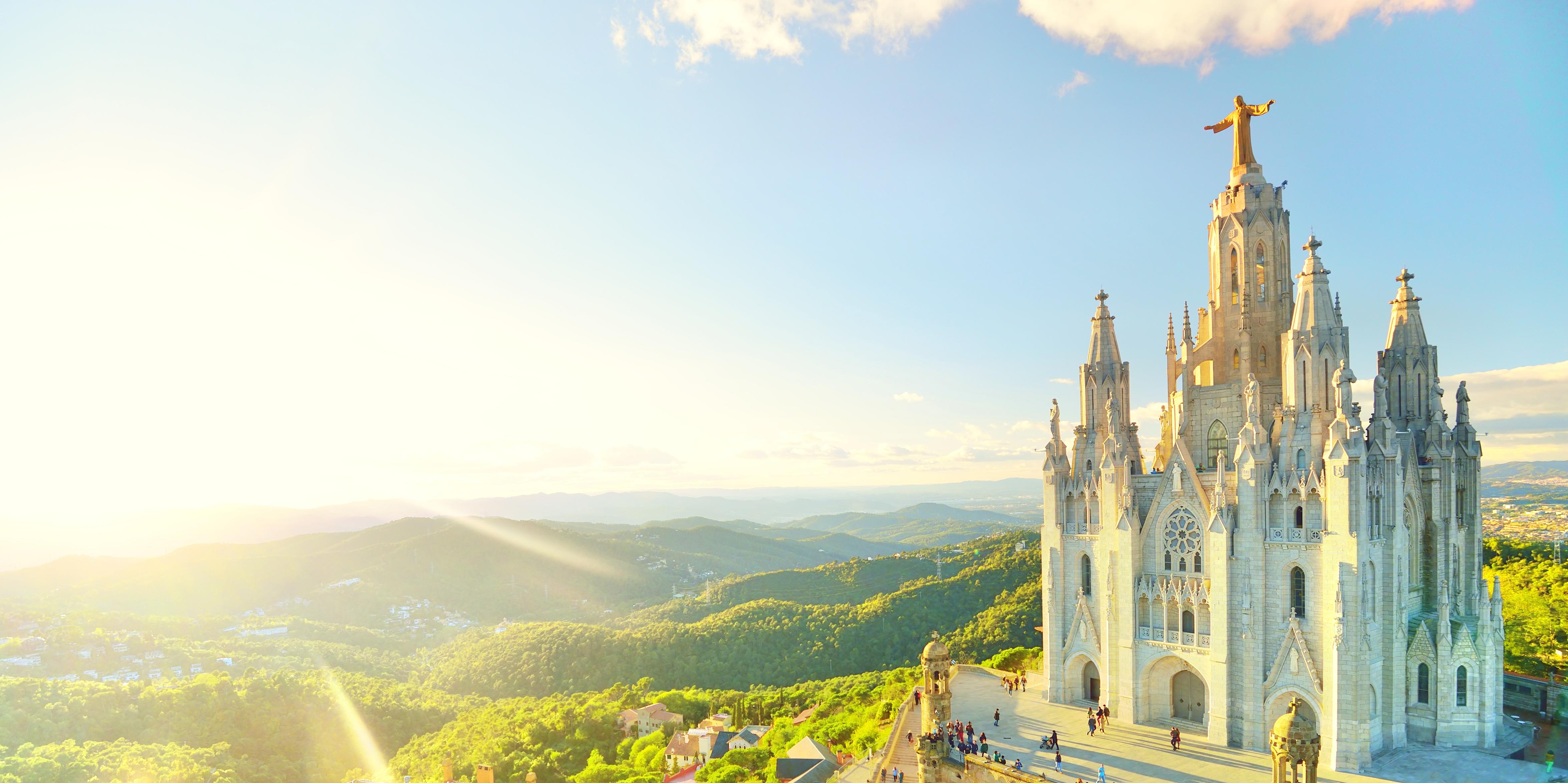
Spain is a land of profound history, rich culture, and culinary excellence, offering a diverse array of experiences that cater to every traveller's interests. Its storied past, from the Roman Empire to its role as a cradle of exploration, shapes a society steeped in tradition yet vibrant with innovation. The country's cultural tapestry is a mosaic of languages, music, and literature, each thread representing a unique region or era.
At its heart lies an explosion of flavors that blend regional cuisines from Galicia, Castile, and Andalusia, each corner offering a taste of its culinary heritage—think paella in Valencia, tapas in Barcelona, or the rich dishes of Madrid. The cities of Spain, such as Madrid's historic streets brimming with art and architecture or Barcelona's sun-drenched beaches and vibrant quarter, capture the essence of this dynamic culture.
For those seeking escape from urban bustle, Spain's coastline offers idyllic beaches like Marbella in Andalucía, where luxury meets Mediterranean serenity. Whether you're sampling authentic Spanish tapas on a cobblestone street or strolling along the Alhambra's grand walls in Granada, each destination provides a unique glimpse into Spain's rich heritage and modern charm.
Barcelona - the best architecture city
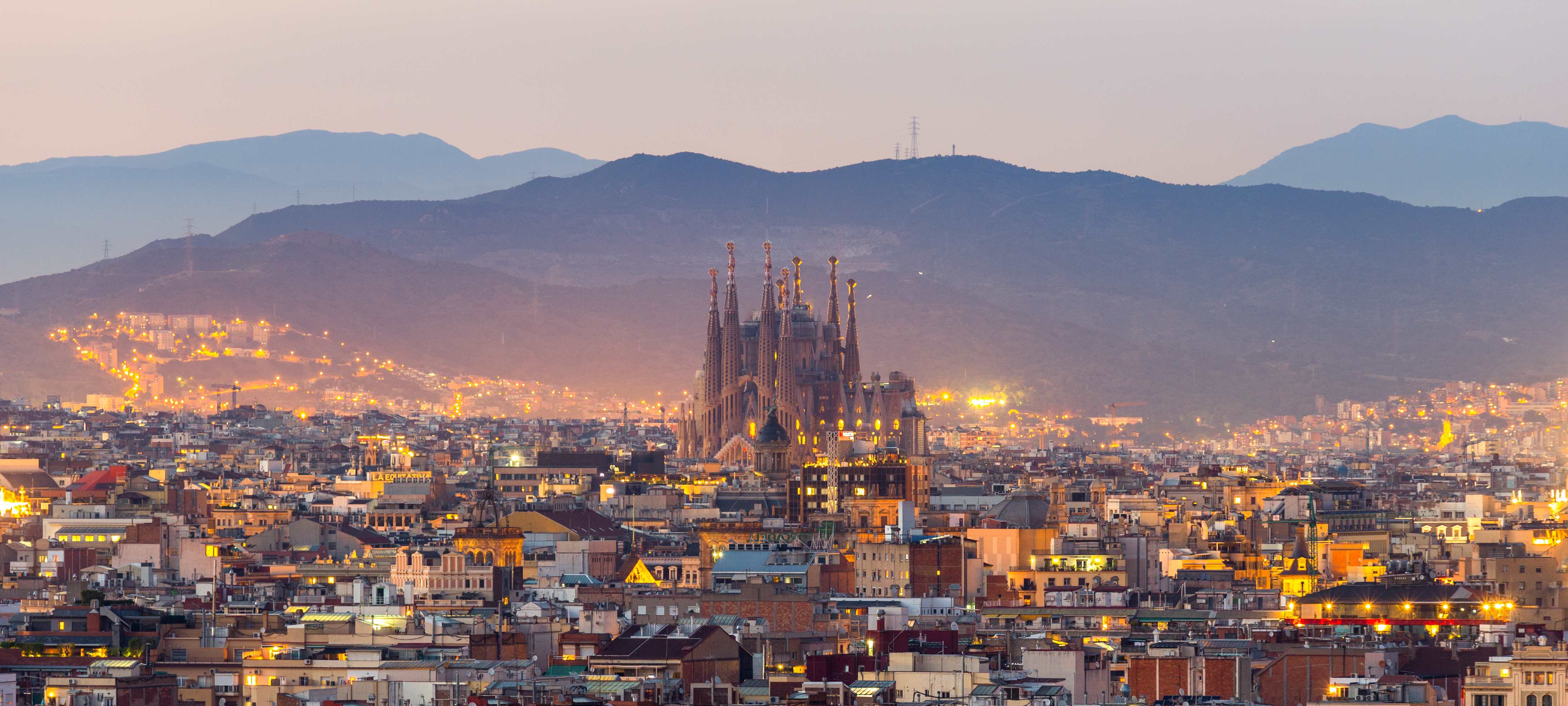
If you’re dreaming of a city that’s got it all—sun-kissed beaches, mind-blowing architecture, and a vibe that’s equal parts historic and hip—then Barcelona needs to be on your radar. Tucked between the sparkling Mediterranean Sea and the lush hills of Catalonia in northeastern Spain, It’s about a 2-hour train from the France, making it a perfect pitstop if you’re road-tripping around Europe. Plus, cheap flights for Brits, it’s no shock everyone from history nerds to Instagram influencers flocks here. People flock here not just for the sun-soaked beaches, but to gawp at architecture that bends reality. Think: candy-coloured mosaics, bone-like pillars, and rooftops that look like they’ve been kissed by dragons. The city where buildings don’t just stand there, they dance.
Barcelona’s rep as Spain’s architecture kingpin starts and ends with Antoni Gaudí, the bloke who treated straight lines like a personal insult. His Sagrada Família isn’t just a church—it’s a stone forest where light filters through stained glass like a psychedelic hymn. Still unfinished after 140 years (talk about a slow burn), it’s the ultimate “trust the process” flex. Then there’s Park Güell, a hillside wonderland where mosaic lizards photobomb your selfies and gingerbread-style gatehouses make you question if you’ve stumbled into a fairy tale. And don’t even get me started on Casa Batlló —its wavy façade and dragon-scale roof are what happens when you let an architect smoke a cigar made of pure imagination. But Barcelona’s not a one-genius wonder. The Gothic Quarter slaps you with medieval vibes—narrow alleys, gargoyle-glared cathedrals, and Roman ruins that whisper, “Mate, I’ve been here since BC.” Then there’s the Eixample district, a grid of modernisme gems where every balcony seems to sprout wrought-iron lilies. Even the street lamps are art here—no kidding, look up.
At dusk, I’d join the parade on Las Ramblas, sipping cava as street performers twirled fire. And then, the beach—Barceloneta’s golden arc, where I devoured paella while waves licked my toes. Next stop? Hop on the Barcelona to Madrid trains for a change of pace.
Madrid - the best 24/7 capital city
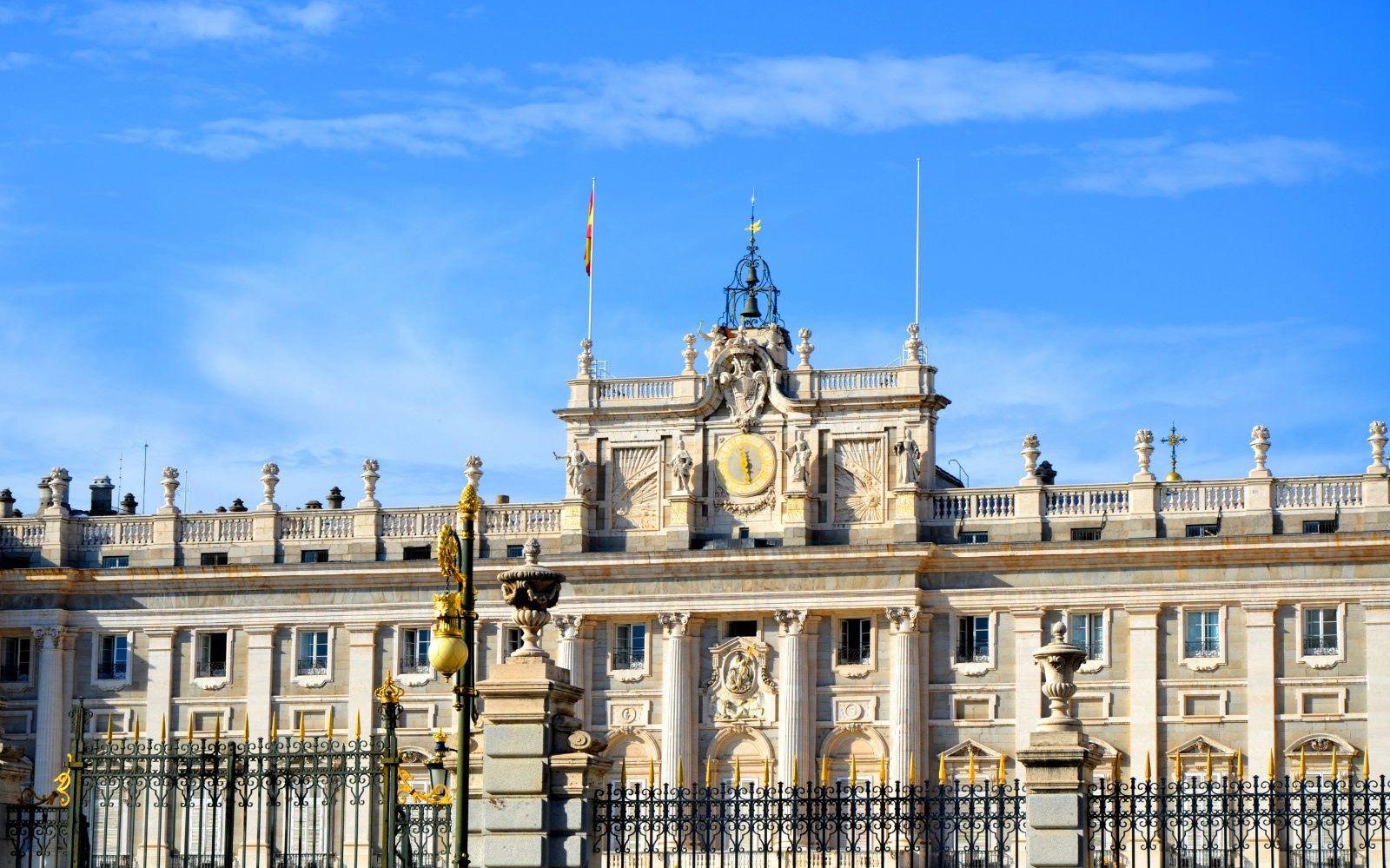
Next on the list, Madrid. Madrid is the city that never clocks off. Spain’s capital, plonked smack in the centre of the country like a stubborn toddler refusing to share the coast, thrives on a “why sleep when we can feast?” mentality. People come here for the art, the all-nighters, and the sheer audacity of a place that serves chocolate con churros as breakfast, lunch, and 3am regret fuel. A quick flight from the UK (gracias, easyJet) and a hub for road-trippers exploring Spain, Madrid’s the kind of place where art, nightlife and football collides.
Madrid’s fame? It’s the ultimate triple threat. First off, art. The “Golden Triangle” is basically a flex—Prado flaunts Goya’s dark side, Reina Sofía stuns with Picasso’s Guernica (it’s bigger than your existential crises), and Thyssen-Bornemisza serves up Monet to Warhol like a posh buffet. But let’s be real: Madrid’s true masterpiece is its streets. Gran Vía glitters with Broadway-esque neon, Plaza Mayor serves Habsburg-era drama (think Inquisition trials and now overpriced coffee), and Malasaña’s graffiti-slathered walls scream punk-rock rebellion.
Madrid is the football city. Not just because it’s got two of Europe’s most iconic clubs—Real Madrid and Atlético Madrid—but because here, football isn’t a game, it’s a full-blown identity crisis in the best way possible. In the Real Madrid Museum, their trophy cabinet’s basically a Louvre of Champions League titles (14 and counting, no big deal), and legends like Di Stéfano, Raúl, and CR7 didn’t just play here; they became deities in all-white kits. T. Walk its halls and you’ll see Zidane’s volley frozen in photos, Benzema’s boots under glass, and you can touch replica trophies and pretend you’re lifting the UCL.
Madrid’s the ultimate no-sleep city. Foodies play tapas roulette in La Latina, hopping from jamón-stuffed bars to vermouth dives where the olives are almost free. Night owls? They’re still dancing at 6am in grungy Malasaña clubs, because sleep is for the weak. And let’s not forget Retiro Park, where rowboats, street performers, and sunset picnics make you forget you’re in a metropolis.
If you are the first time travel to Madrid, there are some must-see places in Madrid. Visit the Royal Palace, a gold-leafed beast with 3,418 rooms (yes, really)—it’s like Bridgerton meets Money Heist. Then, wander Sol and Gran Vía, where shopping sprees and rooftop gin tonics blur into one. Fancy a local secret? Hit Mercado de San Miguel for squid-ink paella bites and cava on tap. Culture craving? The Temple of Debod offers sunset selfies with a side of “wait, why is there a Nile temple in Spain?” And for a breather, Retiro’s Crystal Palace is a glass greenhouse straight out of a fairy tale—minus the talking animals. Still got time? Take a short train trip to Toledo, a medieval maze that’s basically Game of Thrones without the CGI. Or pop on Madrid to Seville trains to continue your journey in Spain.
Seville - the best Flamenco and festival city

Nestled in Andalusia’s sun-fried south, Seville’s thing is passion. This is where flamenco was born, you’ll find it everywhere here: in smoky tablaos where the singers’ voices crack with emotion, in tucked-away bars in Triana (the old gypsy quarter), or even spilling onto sun-baked plazas where locals clap along like they’ve got rhythm in their DNA. I arrived during Feria de Abril, when women swirled in polka-dot dresses and horse carriages clattered past Plaza de España’s tiled alcoves. The foot-stomping zapateado, the wail of the guitar, the way time just stops mid-performance. it’s not a show, it’s a gut punch of passion. Come with an open heart, and you’ll leave with flamenco buzzing in your bones.
Architecture? Oh, Seville flexes. The Real Alcázar is a Moorish palace so dripping with mosaics, fountains, and orange trees, you’ll wonder if you’ve accidentally walked into a sultan’s Pinterest board. Next door, the Seville Cathedral, the world’s largest Gothic church where Columbus himself is supposedly buried, looms like a diva, with a tower (La Giralda) you can climb for views of the city’s terracotta rooftops. And Plaza de España? Imagine a Renaissance palace had a baby with a Disney set—canal boats, ceramic tile murals, and enough Instagram backdrops to break your phone.
Granada - the best Moorish palace city
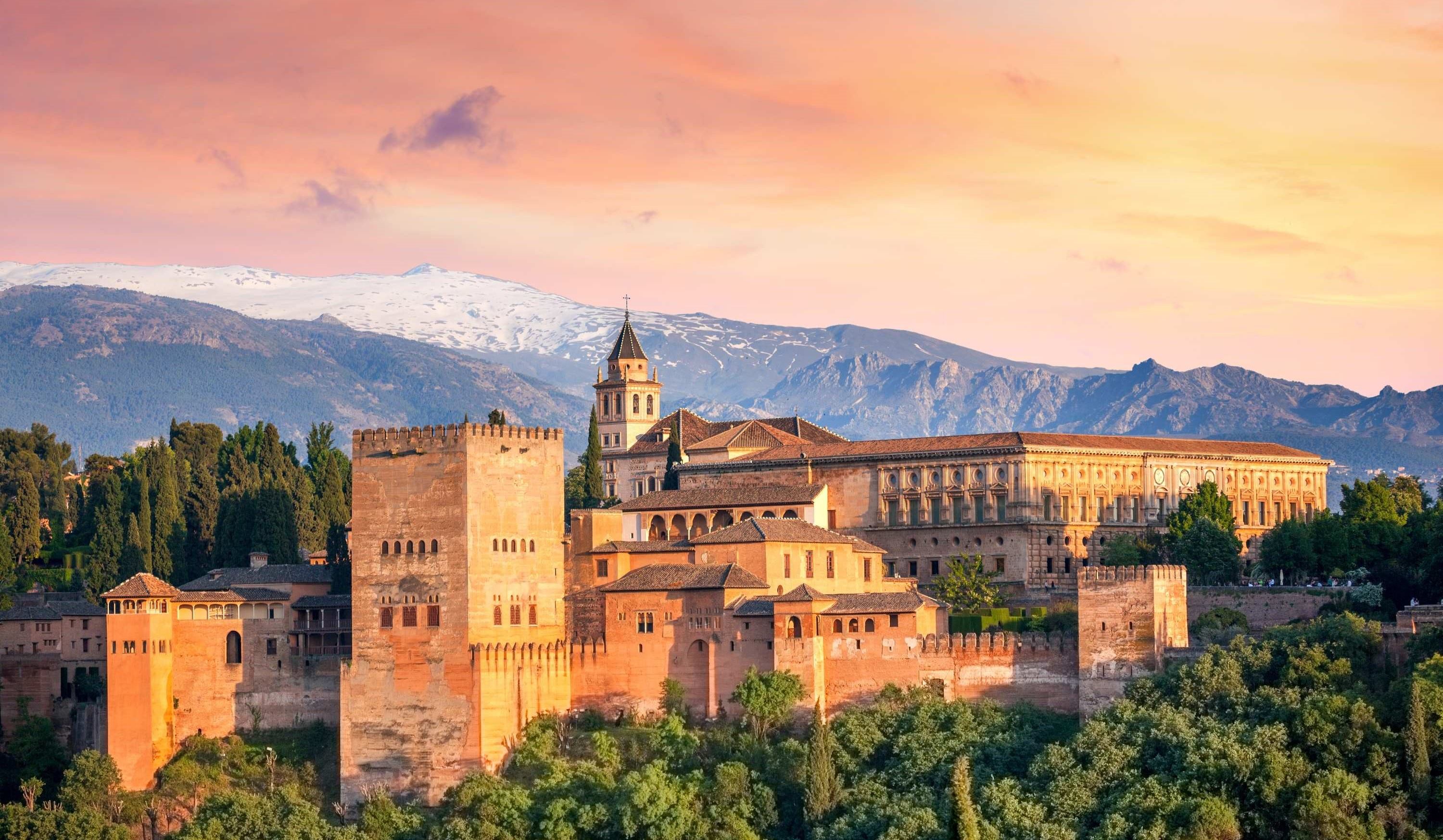
The train journey from Seville to Granada takes 2 hours. Granada’s the sort of city that throws history, culture, and proper Spanish charm at you all at once. It‘s soaking up that spicy mix of Arabic and Spanish vibes and It’s most famous for the Alhambra, obviously – that mind-blowing Moorish palace clinging to a hilltop, where you’ll wander through rooms dripping with intricate carvings, courtyards with mirror-like pools, and gardens that feel like Eden’s VIP section. The Alhambra Palace is one of Spain’s most iconic (and busiest!) landmarks, so plan ahead:
- Booking is essential: Tickets sell out months in advance—secure yours at least 1 month early. Same-day tickets are not available. Or you pay much more expensive private tours.
- Timed entry: Access is strictly tied to your pre-booked timeslot.
- Passport required: You’ll need passport numbers to book tickets and must bring the physical passport for scanning at entry.
Ticket details:
- €19.10/adult: Grants access to the Nasrid Palaces (including Palacios Nazaríes), Partal, Alcazaba fortress (with its Candle Tower and Garden of the Adarves), and the lush Generalife gardens.
⚠️ Critical note: The time printed on your ticket is specifically for entry to the Nasrid Palaces. Arrive punctually—latecomers risk being denied entry.
But there’s more in Granada: the Albaicín’s cobbled lanes, all whitewashed houses and secret viewpoints, are perfect for getting lost (and finding a mint tea spot with killer views of the Alhambra at sunset). Then there’s Sacromonte, the old gypsy quarter, where flamenco in candlelit caves hits you right in the feels.
Córdoba - Spain's best heritage city
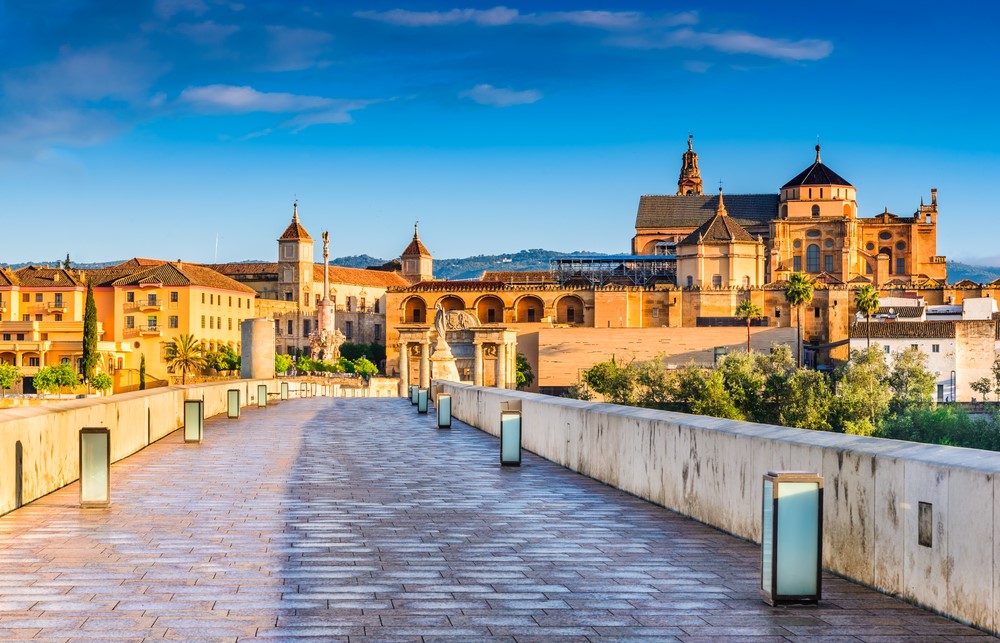
Cordoba is history-packed gem in Andalusia’s heart and tucked inland along the Guadalquivir River. It’s an easy 45 minutes train ride from Seville (45 minutes) or trains from Madrid to Cordoba is just under two hours, making it a no-brainer for a day trip though you may wish to stay longer.
The Mezquita, a jaw-dropping mosque-cathedral mash-up where Muslim prayer met Christian gold.Wander the Jewish Quarter’s flower-draped lanes next, where whitewashed houses and hidden patios (visit in May for the famous Patios Festival – it’s like Chelsea Flower Show on steroids) compete for your attention. Don’t miss the Roman Bridge, especially at sunset when it glows golden, or the Alcázar de los Reyes Cristianos, a fortress-palace with gardens so lush you’ll forget you’re in arid Spain. But I fell harder for the Patios Festival, locals competing for the most floral courtyard, petals cascading over blue pots and mosaic wells. Nights meant fried eggplant drizzled with honey in Calleja de las Flores, alleyways so narrow I could touch both walls. And then, a day trip to Medina Azahara, ruins of a caliph’s vanity, swallows swooping over crumbled columns as if mocking empires.
Valencia - food paradise the best Paella
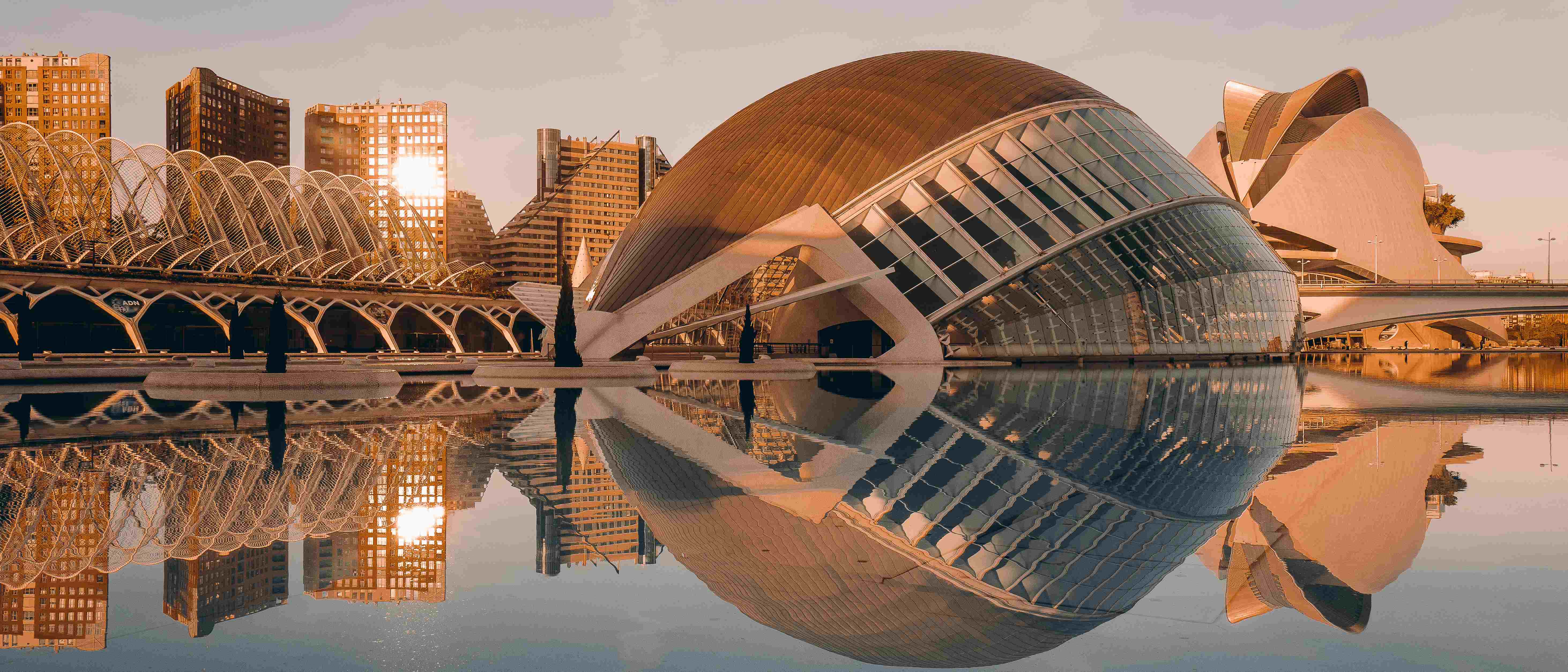
Valencia’s famous for paella. Head to the beachside malvarrosa area, dig into a saffron-soaked pan with rabbit and snails (trust me), and enter food coma heaven. Prefer to burn calories? The Turia Gardens – a lush park in a dried-up riverbed – is ideal for biking, picnics, or just napping under palm trees. Oh, and if you’re here in March, the Fallas Festival’s pure madness: giant papier-mâché sculptures, fireworks that shake your soul, and parties that don’t quit. The City of Arts and Sciences stunned me—Santiago Calatrava’s bones of concrete and glass, rising from a dried riverbed like a sci mirage. But the soul of the city? The Central Market, where octopuses dangled like chandeliers and I ate horchata with fartons beside grandmothers bartering saffron. At La Malvarrosa beach, I learned paella’s true recipe from a grizzled chef: rabbit, snails, and the socarrat crust I’d kill for. And then, Fallas—exploding papier-mâché giants, the air thick with gunpowder and churros.
San Sebastián - the best pintxos & Michelin-starred dining city
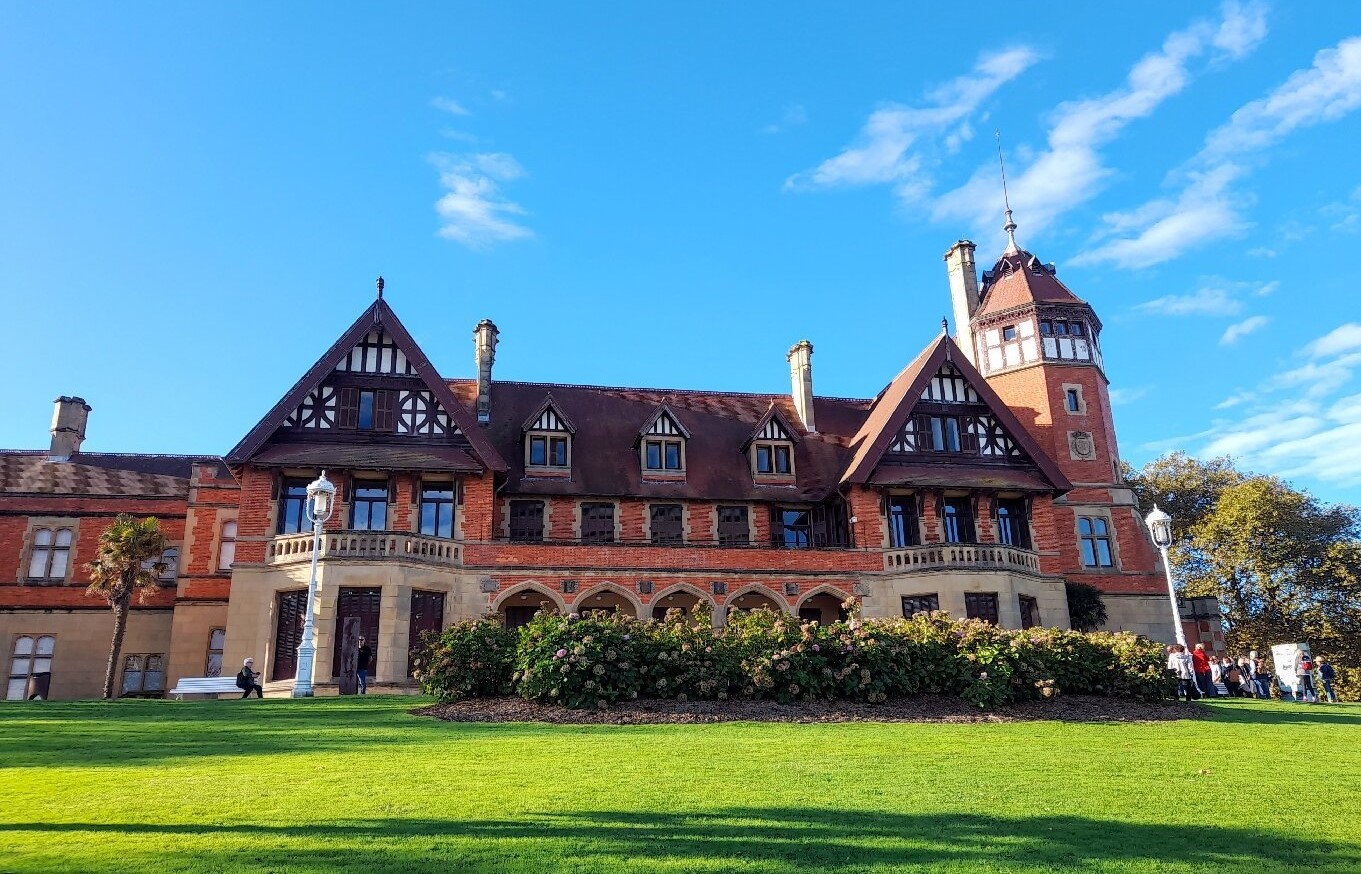
San Sebastián is ridiculously good-looking coastal gem tucked in Spain’s north, right where the Pyrenees flirt with the Bay of Biscay. Getting here from UK needs to fly into Bilbao or Biarritz (just over the French border), then hop on a bus or train from Bilbao to San Sebastian that winds past green hills and fishing villages. Once you arrive, prepare for a city that’s all curves – literally. The star of the show is La Concha Bay, a crescent of golden sand framed by lush hills and a promenade so elegant it’ll make you want to strut in a sundress. But San Sebastián’s not just a pretty face. It’s famous for two things: food and film.
San Sebastián is a Michelin-starred daydream, as there’s a silly number of Michelin stars if you fancy splashing out. I wandered Wander the cobbled streets of the Old Town (Parte Vieja), ducking into bars piled high with bite-sized masterpieces: anchovy-topped peppers, creamy cod tortillas, and jamón so thin you could read through it. Bar Nestor’s tortilla so molten it pooled on the plate, La Viña’s cheesecake so creamy I licked the ramekin. But it was Monte Igueldo that wrecked me. A vintage funicular climbing to a fairytale view, the bay glowing like a sapphire. Later, I hiked the Camino del Norte’s first miles, cliffs crumbling into surf, and wondered why anyone would ever leave.
Film buffs? The annual film festival turns the city into Hollywood-on-Sea every September, with A-listers sipping txakoli (local white wine) between screenings.
Palma de Mallorca - the best Balearic island in Spain
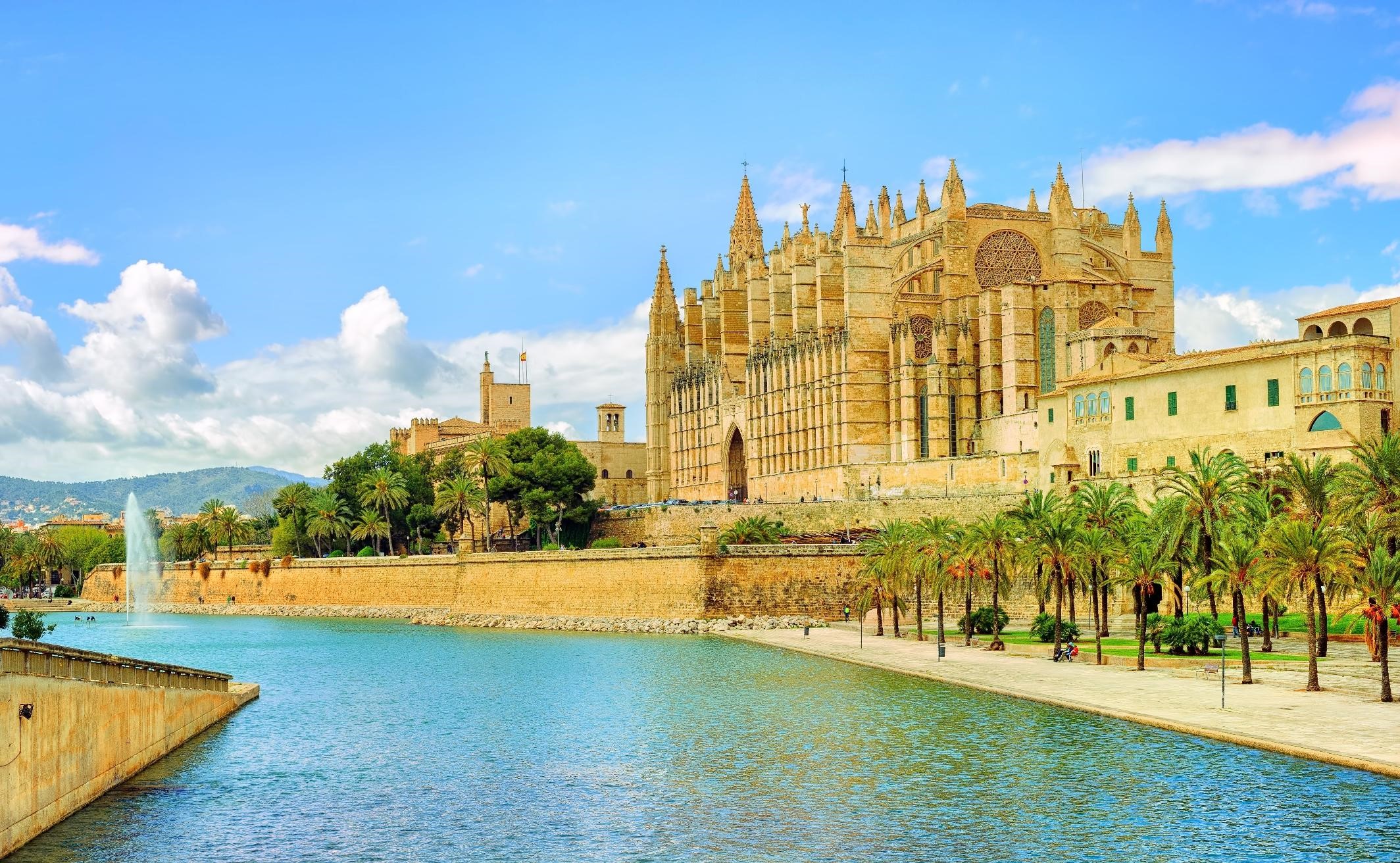
Palma de Mallorca, that sun-soaked, sea-scented capital of the Balearic Islands – is where Mediterranean daydreams come to life. Perched on Mallorca’s south coast, it’s a quick flight to Mallorca from most UK cities (thanks to its busy airport) or a scenic ferry ride from Barcelona or Valencia if you fancy watching the horizon turn from blue to bluer.
Palma has a mix of salty beach energy, Gothic grandeur, and a dash of yacht-chic along the marina. The Old Town (a maze of cobbled lanes, tapas bars, and boutiques stuffed with leather sandals) feels frozen in time, while the marina glitters with flashy boats and rooftop cocktail spots. Don’t miss Bellver Castle, a rare circular fortress with views stretching to the Tramuntana mountains, or Mercat de l’Olivar, a food hall where you’ll want to taste everything – think spicy sobrasada sausage, pearl-sized olives, and ensaimadas (sugar-dusted pastries that’ll ruin your diet).
What Palma is best for? Slow mornings at hidden coves like Cala Major, lazy afternoons people-watching in Plaça Major, and nights that swing between flamenco cellars and beach clubs. It’s a city that lets you hike rugged cliffs by day and nibble Michelin-starred tapas by night, all without breaking a sweat.
How to travel in Spain
My trip to Spain spanned trains, buses and rental cars to white villages like Ronda and Mijas. Pack light: linen for Andalusian heat, hiking boots for Pyrenean trails, a fan for Seville’s furnace summers. Fly into Madrid or Barcelona, but let the AVE trains stitch your route—they’re sleek, swift, and wine-friendly. For islands? Ferry to Mallorca’s coves or Ibiza’s hidden north.
Travel Spain by Train








